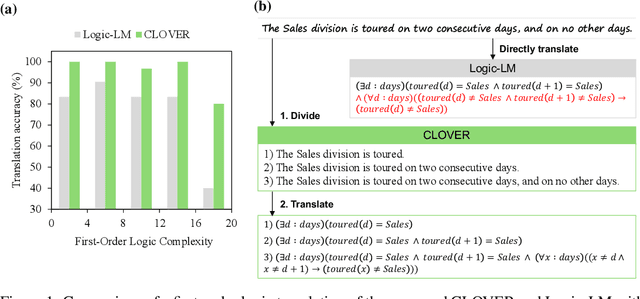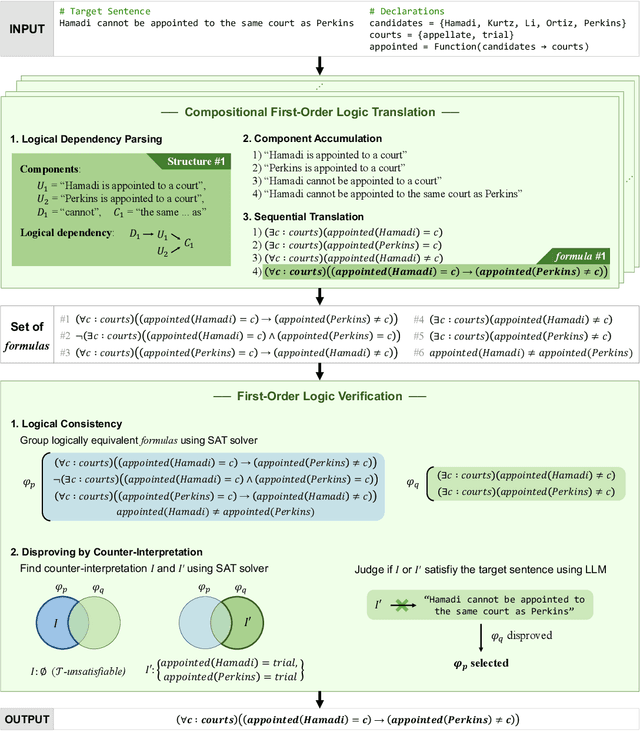Eunho Yang
HybridLinker: Topology-Guided Posterior Sampling for Enhanced Diversity and Validity in 3D Molecular Linker Generation
Feb 24, 2025Abstract:Linker generation is critical in drug discovery applications such as lead optimization and PROTAC design, where molecular fragments are assembled into diverse drug candidates. Existing methods fall into PC-Free and PC-Aware categories based on their use of 3D point clouds (PC). PC-Free models prioritize diversity but suffer from lower validity due to overlooking PC constraints, while PC-Aware models ensure higher validity but restrict diversity by enforcing strict PC constraints. To overcome these trade-offs without additional training, we propose HybridLinker, a framework that enhances PC-Aware inference by providing diverse bonding topologies from a pretrained PC-Free model as guidance. At its core, we propose LinkerDPS, the first diffusion posterior sampling (DPS) method operating across PC-Free and PC-Aware spaces, bridging molecular topology with 3D point clouds via an energy-inspired function. By transferring the diverse sampling distribution of PC-Free models into the PC-Aware distribution, HybridLinker significantly and consistently surpasses baselines, improving both validity and diversity in foundational molecular design and applied property optimization tasks, establishing a new DPS framework in the molecular and graph domains beyond imaging.
Every Expert Matters: Towards Effective Knowledge Distillation for Mixture-of-Experts Language Models
Feb 18, 2025Abstract:With the emergence of Mixture-of-Experts (MoE), the efficient scaling of model size has accelerated the development of large language models in recent years. However, their high memory requirements prevent their use in resource-constrained environments. While knowledge distillation (KD) has been a proven method for model compression, its application to MoE teacher models remains underexplored. Through our investigation, we discover that non-activated experts in MoE models possess valuable knowledge that benefits student models. We further demonstrate that existing KD methods are not optimal for compressing MoE models, as they fail to leverage this knowledge effectively. To address this, we propose two intuitive MoE-specific KD methods for the first time: Knowledge Augmentation (KA) and Student-Aware Router (SAR), both designed to effectively extract knowledge from all experts. Specifically, KA augments knowledge by sampling experts multiple times, while SAR uses all experts and adjusts the expert weights through router training to provide optimal knowledge. Extensive experiments show that our methods outperform conventional KD methods, demonstrating their effectiveness for MoE teacher models.
LANTERN++: Enhanced Relaxed Speculative Decoding with Static Tree Drafting for Visual Auto-regressive Models
Feb 10, 2025



Abstract:Speculative decoding has been widely used to accelerate autoregressive (AR) text generation. However, its effectiveness in visual AR models remains limited due to token selection ambiguity, where multiple tokens receive similarly low probabilities, reducing acceptance rates. While dynamic tree drafting has been proposed to improve speculative decoding, we show that it fails to mitigate token selection ambiguity, resulting in shallow draft trees and suboptimal acceleration. To address this, we introduce LANTERN++, a novel framework that integrates static tree drafting with a relaxed acceptance condition, allowing drafts to be selected independently of low-confidence predictions. This enables deeper accepted sequences, improving decoding efficiency while preserving image quality. Extensive experiments on state-of-the-art visual AR models demonstrate that LANTERN++ significantly accelerates inference, achieving up to $\mathbf{\times 2.56}$ speedup over standard AR decoding while maintaining high image quality.
Unraveling Zeroth-Order Optimization through the Lens of Low-Dimensional Structured Perturbations
Jan 31, 2025Abstract:Zeroth-order (ZO) optimization has emerged as a promising alternative to gradient-based backpropagation methods, particularly for black-box optimization and large language model (LLM) fine-tuning. However, ZO methods suffer from slow convergence due to high-variance stochastic gradient estimators. While structured perturbations, such as sparsity and low-rank constraints, have been explored to mitigate these issues, their effectiveness remains highly under-explored. In this work, we develop a unified theoretical framework that analyzes both the convergence and generalization properties of ZO optimization under structured perturbations. We show that high dimensionality is the primary bottleneck and introduce the notions of \textit{stable rank} and \textit{effective overlap} to explain how structured perturbations reduce gradient noise and accelerate convergence. Using the uniform stability under our framework, we then provide the first theoretical justification for why these perturbations enhance generalization. Additionally, through empirical analysis, we identify that \textbf{block coordinate descent} (BCD) to be an effective structured perturbation method. Extensive experiments show that, compared to existing alternatives, memory-efficient ZO (MeZO) with BCD (\textit{MeZO-BCD}) can provide improved converge with a faster wall-clock time/iteration by up to $\times\textbf{2.09}$ while yielding similar or better accuracy.
Stable-TTS: Stable Speaker-Adaptive Text-to-Speech Synthesis via Prosody Prompting
Dec 28, 2024Abstract:Speaker-adaptive Text-to-Speech (TTS) synthesis has attracted considerable attention due to its broad range of applications, such as personalized voice assistant services. While several approaches have been proposed, they often exhibit high sensitivity to either the quantity or the quality of target speech samples. To address these limitations, we introduce Stable-TTS, a novel speaker-adaptive TTS framework that leverages a small subset of a high-quality pre-training dataset, referred to as prior samples. Specifically, Stable-TTS achieves prosody consistency by leveraging the high-quality prosody of prior samples, while effectively capturing the timbre of the target speaker. Additionally, it employs a prior-preservation loss during fine-tuning to maintain the synthesis ability for prior samples to prevent overfitting on target samples. Extensive experiments demonstrate the effectiveness of Stable-TTS even under limited amounts of and noisy target speech samples.
Towards Precise Prediction Uncertainty in GNNs: Refining GNNs with Topology-grouping Strategy
Dec 18, 2024



Abstract:Recent advancements in graph neural networks (GNNs) have highlighted the critical need of calibrating model predictions, with neighborhood prediction similarity recognized as a pivotal component. Existing studies suggest that nodes with analogous neighborhood prediction similarity often exhibit similar calibration characteristics. Building on this insight, recent approaches incorporate neighborhood similarity into node-wise temperature scaling techniques. However, our analysis reveals that this assumption does not hold universally. Calibration errors can differ significantly even among nodes with comparable neighborhood similarity, depending on their confidence levels. This necessitates a re-evaluation of existing GNN calibration methods, as a single, unified approach may lead to sub-optimal calibration. In response, we introduce **Simi-Mailbox**, a novel approach that categorizes nodes by both neighborhood similarity and their own confidence, irrespective of proximity or connectivity. Our method allows fine-grained calibration by employing *group-specific* temperature scaling, with each temperature tailored to address the specific miscalibration level of affiliated nodes, rather than adhering to a uniform trend based on neighborhood similarity. Extensive experiments demonstrate the effectiveness of our **Simi-Mailbox** across diverse datasets on different GNN architectures, achieving up to 13.79\% error reduction compared to uncalibrated GNN predictions.
Med-PerSAM: One-Shot Visual Prompt Tuning for Personalized Segment Anything Model in Medical Domain
Nov 25, 2024Abstract:Leveraging pre-trained models with tailored prompts for in-context learning has proven highly effective in NLP tasks. Building on this success, recent studies have applied a similar approach to the Segment Anything Model (SAM) within a ``one-shot" framework, where only a single reference image and its label are employed. However, these methods face limitations in the medical domain, primarily due to SAM's essential requirement for visual prompts and the over-reliance on pixel similarity for generating them. This dependency may lead to (1) inaccurate prompt generation and (2) clustering of point prompts, resulting in suboptimal outcomes. To address these challenges, we introduce \textbf{Med-PerSAM}, a novel and straightforward one-shot framework designed for the medical domain. Med-PerSAM uses only visual prompt engineering and eliminates the need for additional training of the pretrained SAM or human intervention, owing to our novel automated prompt generation process. By integrating our lightweight warping-based prompt tuning model with SAM, we enable the extraction and iterative refinement of visual prompts, enhancing the performance of the pre-trained SAM. This advancement is particularly meaningful in the medical domain, where creating visual prompts poses notable challenges for individuals lacking medical expertise. Our model outperforms various foundational models and previous SAM-based approaches across diverse 2D medical imaging datasets.
A Simple Remedy for Dataset Bias via Self-Influence: A Mislabeled Sample Perspective
Nov 01, 2024Abstract:Learning generalized models from biased data is an important undertaking toward fairness in deep learning. To address this issue, recent studies attempt to identify and leverage bias-conflicting samples free from spurious correlations without prior knowledge of bias or an unbiased set. However, spurious correlation remains an ongoing challenge, primarily due to the difficulty in precisely detecting these samples. In this paper, inspired by the similarities between mislabeled samples and bias-conflicting samples, we approach this challenge from a novel perspective of mislabeled sample detection. Specifically, we delve into Influence Function, one of the standard methods for mislabeled sample detection, for identifying bias-conflicting samples and propose a simple yet effective remedy for biased models by leveraging them. Through comprehensive analysis and experiments on diverse datasets, we demonstrate that our new perspective can boost the precision of detection and rectify biased models effectively. Furthermore, our approach is complementary to existing methods, showing performance improvement even when applied to models that have already undergone recent debiasing techniques.
Augmentation-Driven Metric for Balancing Preservation and Modification in Text-Guided Image Editing
Oct 15, 2024Abstract:The development of vision-language and generative models has significantly advanced text-guided image editing, which seeks \textit{preservation} of core elements in the source image while implementing \textit{modifications} based on the target text. However, in the absence of evaluation metrics specifically tailored for text-guided image editing, existing metrics are limited in balancing the consideration of preservation and modification. Especially, our analysis reveals that CLIPScore, the most commonly used metric, tends to favor modification and ignore core attributes to be preserved, resulting in inaccurate evaluations. To address this problem, we propose \texttt{AugCLIP}, \black{which balances preservation and modification by estimating the representation of an ideal edited image that aligns with the target text with minimum alteration on the source image. We augment detailed textual descriptions on the source image and the target text using a multi-modal large language model, to model a hyperplane that separates CLIP space into source or target. The representation of the ideal edited image is an orthogonal projection of the source image into the hyperplane, which encapsulates the relative importance of each attribute considering the interdependent relationships.} Our extensive experiments on five benchmark datasets, encompassing a diverse range of editing scenarios, demonstrate that \texttt{AugCLIP} aligns remarkably well with human evaluation standards compared to existing metrics. The code for evaluation will be open-sourced to contribute to the community.
Divide and Translate: Compositional First-Order Logic Translation and Verification for Complex Logical Reasoning
Oct 10, 2024



Abstract:Complex logical reasoning tasks require a long sequence of reasoning, which a large language model (LLM) with chain-of-thought prompting still falls short. To alleviate this issue, neurosymbolic approaches incorporate a symbolic solver. Specifically, an LLM only translates a natural language problem into a satisfiability (SAT) problem that consists of first-order logic formulas, and a sound symbolic solver returns a mathematically correct solution. However, we discover that LLMs have difficulties to capture complex logical semantics hidden in the natural language during translation. To resolve this limitation, we propose a Compositional First-Order Logic Translation. An LLM first parses a natural language sentence into newly defined logical dependency structures that consist of an atomic subsentence and its dependents, then sequentially translate the parsed subsentences. Since multiple logical dependency structures and sequential translations are possible for a single sentence, we also introduce two Verification algorithms to ensure more reliable results. We utilize an SAT solver to rigorously compare semantics of generated first-order logic formulas and select the most probable one. We evaluate the proposed method, dubbed CLOVER, on seven logical reasoning benchmarks and show that it outperforms the previous neurosymbolic approaches and achieves new state-of-the-art results.
 Add to Chrome
Add to Chrome Add to Firefox
Add to Firefox Add to Edge
Add to Edge